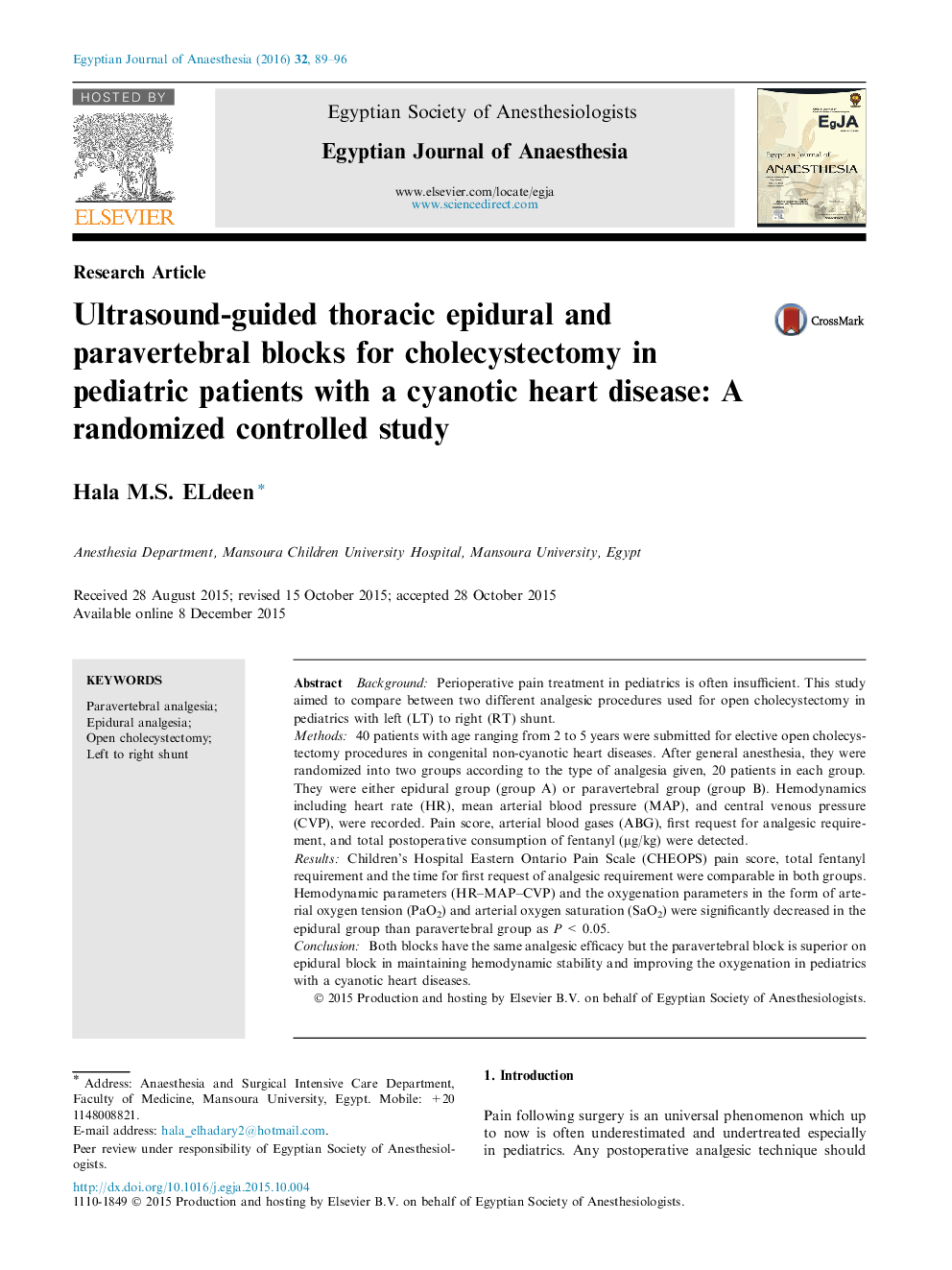| Article ID | Journal | Published Year | Pages | File Type |
|---|---|---|---|---|
| 2756216 | Egyptian Journal of Anaesthesia | 2016 | 8 Pages |
BackgroundPerioperative pain treatment in pediatrics is often insufficient. This study aimed to compare between two different analgesic procedures used for open cholecystectomy in pediatrics with left (LT) to right (RT) shunt.Methods40 patients with age ranging from 2 to 5 years were submitted for elective open cholecystectomy procedures in congenital non-cyanotic heart diseases. After general anesthesia, they were randomized into two groups according to the type of analgesia given, 20 patients in each group. They were either epidural group (group A) or paravertebral group (group B). Hemodynamics including heart rate (HR), mean arterial blood pressure (MAP), and central venous pressure (CVP), were recorded. Pain score, arterial blood gases (ABG), first request for analgesic requirement, and total postoperative consumption of fentanyl (μg/kg) were detected.ResultsChildren’s Hospital Eastern Ontario Pain Scale (CHEOPS) pain score, total fentanyl requirement and the time for first request of analgesic requirement were comparable in both groups. Hemodynamic parameters (HR–MAP–CVP) and the oxygenation parameters in the form of arterial oxygen tension (PaO2) and arterial oxygen saturation (SaO2) were significantly decreased in the epidural group than paravertebral group as P < 0.05.ConclusionBoth blocks have the same analgesic efficacy but the paravertebral block is superior on epidural block in maintaining hemodynamic stability and improving the oxygenation in pediatrics with a cyanotic heart diseases.
